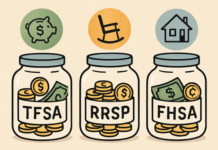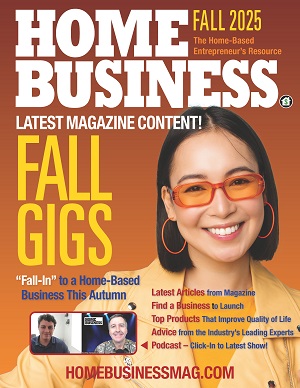The inbox is quiet at 5:52 a.m. The coffee is too hot to sip. You open the spreadsheet you’ve been avoiding and feel the familiar flutter in your chest. No one is coming to make the call for you. That reality can feel stark, but it is also the gift of working solo: the chance to build a way of leading that is deeply your own.
Treat Uncertainty as the Landscape, Not the Villain
Most founders try to “beat” uncertainty, as if a better plan would make the fog lift. Plans matter, but markets move, clients change their minds, and timing plays tricks. Progress gets easier when uncertainty stops feeling like a problem to solve and becomes the terrain you’re trained to move through. You can’t force a clear sky. You can learn to read the weather.
A simple reframe helps. Risk is when you can estimate odds. Ambiguity is when you can’t. Solo entrepreneurs can lead even when they swim in ambiguity. The work of self-leadership is learning to decide when the numbers are fuzzy, to act without overreacting, and to keep your footing when feedback is slow.
Start With the Inner Ground: Values, Boundaries, Direction
Without an inner compass, it’s easy to chase every lead and say yes to work that dilutes your craft. When you name your values, decisions begin to sort themselves. If “craftsmanship over speed” is a value, you know how to price, where to push back, and which projects to decline.
Boundaries give those values teeth. Office hours, response windows, even a rule that sales calls happen only on certain days—all of that reduces noise. Direction is the last piece. You don’t need a five-year plan. You do need a near-term horizon: a clear picture of what “good” looks like over the next quarter.
Decision Hygiene for Foggy Days
When the path is unclear, solo entrepreneurs can lead by finding a steadier middle instead of freezing or sprinting..
Begin by right-sizing the choice. Is this decision reversible? If yes, design a small test with a clear review date. If no, slow down just enough to gather one or two missing pieces of information, then commit.
Give hard choices daylight and movement. Walk without your phone and ask one question: “What outcome do I want to be proud of a year from now?” Then return and write an email you never sent that argues both sides of the decision. Seeing your own case on paper creates distance from the swirl.
Finally, decide how you will decide. Deadlines focus the mind. Criteria calm it. “I’ll choose by Thursday at 3 p.m., and the criteria are fit, effort, and learning potential.” You may not feel certain, but you’ll feel led.
Work the Rhythm, Not Just the Plan
Self-leadership is less about heroic pushes and more about reliable rhythms. A weekly review that actually happens beats a perfect system you never use. Keep it plain: what moved, what didn’t, what needs attention. Close with one question—“What would make next week lighter but more effective?”—and schedule that change.
Daily openers matter, too. Before you touch messages, write the three most consequential actions for the day. Not the longest. The ones with outsized impact. If you finish only those three, your business will still move.
When Solitude Turns to Isolation
Independence can slide into isolation without making a sound. That’s when perspective warps. Wins feel smaller. Problems feel personal. Your effort goes up while your options seem to shrink.
The antidote isn’t a louder pep talk. It’s a clearer mirror. Founders often need a place to explore the real drivers beneath their decisions: fear of disappointing a client, over-identification with outcomes, the story you tell yourself when you miss. Some solo entrepreneurs can lead more confidently when they find that CEO coaching services which offer a deeper process of self-inquiry alongside action-oriented plans to help them move in the right direction. With a good guide, you’ll notice the patterns, not just the symptoms.
Experiments Over Bets
When the future is murky, shrink the stakes and shorten the feedback loop. Launch the stripped-down version of a service to three handpicked clients in exchange for rigorous feedback. Try a new price with a pilot group and record every question they ask. Spend two weeks selling a single offer and track the objections you hear. You are not guessing. You are sampling the market to earn better guesses.
The magic is in the review. Write down what you hoped would happen, what actually happened, and what you’ll change. That tiny ritual turns random tries into learning.
Care For the Instrument
A solo business runs on one engine: you. It is tempting to treat rest as a reward for performance. In practice, it’s a prerequisite for wise leadership. Sleep, movement, real food, time with people who see you as more than output—these are not indulgences. They are how you keep access to your full range of perception, which is the only real advantage a small business has.
If you struggle to switch off, rename the activity. “Recovery” lands differently than “self-care.” You are tuning the instrument so it plays clean tomorrow.
Progress You Can Feel
Revenue is a lagging signal. Useful, but slow. Solo entrepreneurs need leading signals they can feel week to week. Try these: a pipeline with dates, not hopes. A win log that captures client remarks in their exact words. A short list of early indicators that a project is drifting—missed mini-deadlines, vague scope, slow replies—so you can intervene while change is still cheap.
Most of all, track your own state. Rate energy, focus, and groundedness on a simple one-to-five scale at day’s end. Patterns appear quickly. You’ll see which clients give you life and which agreements need a reset.
A Way Through, Not a Way Around
Uncertainty is not a verdict on your capacity. It is the environment in which your capacity is revealed. When you treat it as the landscape, set your inner compass, keep decent decision hygiene, and ask for the right kind of help, you stop waiting for confidence and begin acting from integrity. That steadiness is what clients feel. It’s what sustains you through lean stretches and sudden growth spurts alike. And it is what turns a one-person business into a practice you can be proud of.
Find a Home-Based Business to Start-Up >>> Hundreds of Business Listings.














































